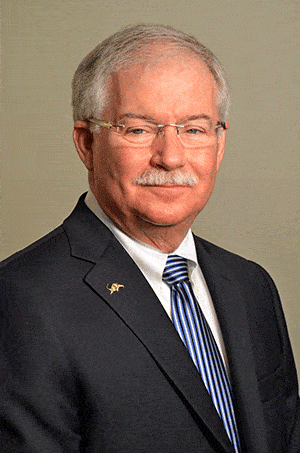
Supply chains were unreliable and heroic recoveries were visible and common. The reps were paid a commission on the gross margin they generated so they could “eat what they killed.” The sales force was self-directed and those that couldn’t cut it found other employment. The advantage of scale was buying better from suppliers. Market power rested primarily with the manufacturers, and the lines a distributor represented often defined their growth rates.
Step forward to today and the world is very different. It would take an historian to track all the changes that brought us to this point. There would be chapters that cover the role of distributor trade associations, buying groups, geographic branch expansion, the rise of central distribution centers, specialized sales roles, and of course technology.
What Market Leaders Do Right
It doesn’t really matter how we got here, today’s distributor must compete and grow in this challenging environment. It would be interesting, if we could, to ask those who created the great distributors back in the 70s how they would compete today. We had a great opportunity back at the turn of the century to build ethnographic profiles on many of these great leaders. One thing that they all had in common was the ability to ask hard questions and change what wasn’t working. To the many who were comfortable doing the same things over and over, these leaders appeared to be tough and demanding. But they all created significant growth for their shareholders.
One huge takeaway from this research that has stayed with me is that they all expected to consistently and significantly outperform their competitors. Michael Porter, the Harvard professor and well-known strategy guru, called it competitive advantage. Their sales and profit declines in recessions were less than their competitors, they captured share when the economy recovered, and created more profit and experienced higher growth during economic expansions.
Over the years in our consulting practice, we have seen many distributors earn EBITDA margins over 10% and a few above 25%. We have also seen long-term growth rates that are consistently two and even three times the market. These firms exist today; they are privately held and definitely not for sale. Most are serial acquirers that can effectively integrate the new firms into their core business. About half of their growth is due to acquisitions and cross selling.
The most important strategic question for any distributor today is: “Do you have higher profits and growth than your competitors, and if you don’t, what are you going to do about it?
The first step is understanding how the executive leadership defines what is considered acceptable performance. There is an old expression that the CEO always gets their minimum-accepted performance level. Many distributors today are working as hard as they can to just stay even and squeeze out a growth rate slightly above GDP with average net margins. Many don’t know what else to do so they try as hard as they can to improve what they are doing now. They often gravitate to the latest guru or great idea and build e-commerce websites, implement CRM systems, do sales training, or get into private label. For most, this is playing around the edges of what is necessary.
Leading distributors are analytically led and strategically driven. They share many characteristics and most distributors would find it useful to compare themselves to the core practices they employ. The list below is generic – and oversimplified – but is hopefully still instructive. In no particular order, the practices include:
- Their sales reps still have flexibility to maintain customer intimacy, but they are clearly management-directed versus self-directed.
- They no longer have generalist field sales reps and have migrated to specialized roles where the economic value of recurring activities is grouped to match appropriate compensation levels.
- They have created specialized value propositions for specific customer segments and allocated resources based on the segment’s cost to grow and potential to grow.
- They are deeply involved in the digital transition and investments are balanced between lowering SG&A costs with automated processes and creating a B2C experience for their customers.
- Their CRM systems are designed first for helping sales reps make better decisions on where to spend their time, not just giving managers a set of tools to measure them.
- They have developed analytical tools to understand market potential and share of spend metrics by customer along with the cost to serve. Many even know the net profit by customer by month.
- Sales staff has input, but not control, over pricing to customers. In many of these firms the sales rep doesn’t see or know purchase costs.
- Pricing is data-driven and rules based such that they have hard data on what is the market price at a transaction level to overcome traditional negotiation activity.
- Individual sales contributors, and many others, see their performance on a monthly and year-to-date ranking report.
- They have designed compensation and incentives such that selling costs decline with scale and are no longer linear.
- Their supplier scorecards are not negotiating tools, but joint measurement processes closely linked to suppliers to improve the effectiveness of their commercial relationships.
- Every employee knows the strategy and can explain it at a high level. This means that everyone knows why the distributor is doing what it is doing.
Thinking Beyond Lunchtime
So few distributors employ these practices because most are looking for good ideas or initiatives to lay on top of their existing organizational structures. The executives have lengthy discussions about what they need to do now. After an emotional and often data-free discussion they choose something and charge ahead. This rarely meets initial expectations because they are facing a strategic issue using tactical tools. The old joke for most lifestyle distributors is that long-range planning is what they do after lunch.
The real answer is that distributors need to develop a strategy to define their true north, so they will no longer be distracted by ongoing tactical noise. Being strategically driven means that when the CEO changes, the strategy does not. It does not mean doing the same thing as a competitor – only better. That is an operational activity. Peter Drucker’s first law of service is that sometimes you can only hope to be no worse than your competitor. And a five-year revenue forecast is not a strategy. The most effective strategies are only 20% numerical. The remaining 80% are focused on value propositions and how they are delivered.
The real essence of strategy for these market leaders is creating unique activities that make it blindingly easy for a customer to choose that distributor over competitive alternatives.
It takes months to develop a strategy. And a strategy should start with the customers, not the sales force. Remember that sales rep input is heavily colored by negotiation. (Every customer wants to buy from the best distributor at the worst distributor’s price).
The real obstacle for most is that it costs time and money to create a real strategy. Few have the ability or willingness to take the short-term hit for the pivot to the new strategy. If you are one of those few that are playing the game to win – and not just to lose – you will thrive; no matter what the market throws at you now or in the future.

